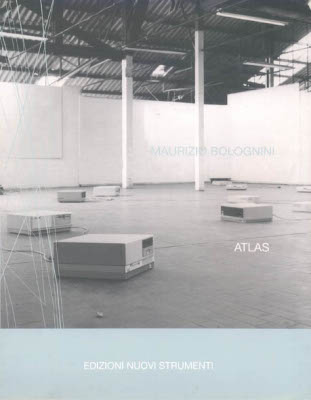Indice / Table of Contents
Prefazione / Preface
Mario Casanova,
Alessia Evangelista, Raffaella Morra
Installazioni / Installations
Centro Arte
Contemporanea Ticino
E-M Arts / Studio Morra
Algoritmo
/ Algorithm /
al-khuwaritzmi
Gli algoritmi
sigillati di Maurizio Bolognini
The sealed algorithms of Maurizio Bolognini
Giulio
Giorello
Casualità, causalità
e controllo nel lavoro di Maurizio Bolognini
Randomness, causality and control in the works by Maurizio Bolognini
Paola Barbara Sega
Dal Fuori-artista a
Museophagia
From Fuori-Artista
to Museophagia
Enrico Pedrini
Opere / Works
Maurizio Bolognini - perhaps sub-conciously - must
have some unfinished business with the Irish bishop
George Berkeley (1685-1753), who maintained that esse
est percipi et percipere, that is to say "to be is to be perceived
and to perceive". His Sealed Computers will function
over a long period of time, but the public eye will only
perceive the machine and not the product. Besides,
Bolognini, not unlike Berkeley, feels a fascination for what
mathematicians normally call the generative power of calculus. It is the ancient tradition which lies at the basis of
our very own modernity - just think of the English
philosopher Thomas Hobbes (1588-1679), who in the
mid-seventeenth century declared that "reasoning is but
mere calculation" (while the Jansenist Blaise Pascal was
designing the first machines which were able to compute).
Among those who cast a long shadow were the
unknown "mathematicians" from Mesopotamia (those
Babylonians, so feared in the Jewish Bible), Greek experts
in the "art of calculating" (in Greek logistike, from logos,
which denotes reason, expression and numerical relationship
all at the same time), the enigmatic Islamic "algebraists"
(note that it is from the name of the great ninth
century mathematician from Baghdad, al-Kwarizmi that
the term algorithm is derived which today stands for any
effective procedure which can elaborate initial data into
requested results in a finite number of steps) and the renaissance
masters of ars analytica. What allowed a leeway
of meaning in what would otherwise be merely a "manipulation"
of signs was the ability to interpret data and
results in a geometric context, where with senses like
vision and touch, the "doors of perception", concepts and
formulae could be rendered spatially. It was this type of
hermeneutics which Berkeley saw as the only way in
which the work of a mathematician could be distinguished
from that of a simple conjurer and his tricks. But
it is this same coupling that contemporary art is trying to break. The sign forgets, as it were, any
established reference - but can we not conclude from
this that, as a result, we are forced to continuously search
for new ones without, however, there being any guarantee
of finding one?
(from Giulio Giorello, The sealed algorithms of Maurizio
Bolognini: between sign and meaning)
|

